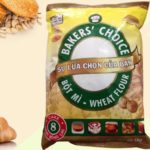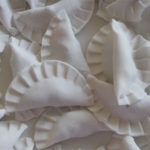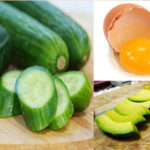1 All-Purpose Flour
Also known as All Purpose Flour, this versatile flour is a staple for any baker. It’s perfect for a wide range of baked goods, from cookies and cakes to cupcakes and bread. With its fine texture and gluten content, it helps create delicious, fragrant treats with ease.
 All-Purpose Flour
All-Purpose Flour
Cake flour, a finer variety of wheat flour, is a favorite among home bakers. It’s ideal for creating soft, fluffy cakes and pastries. Whether you’re following a specific recipe or experimenting, this flour is a great choice.
 Cake Flour
Cake Flour
Bread flour, as the name suggests, is perfect for breads, baguettes, and pizzas. It gives your baked goods a chewy texture and delicious flavor.
 Bread Flour
Bread Flour
Self-raising flour is a convenient blend of flour, baking powder, and salt. If you’re new to baking or short on time, this pre-mixed flour is a great option as it eliminates the need for measuring multiple ingredients.
 Self-Raising Flour
Self-Raising Flour
2 Rice Flour
Rice flour comes in two varieties: regular rice flour and sticky rice flour (also known as glutinous rice flour). Regular rice flour is ideal for making delicate dishes like steamed rice cakes, rice pancakes, and transparent rice dumplings. Meanwhile, sticky rice flour is perfect for treats like steamed rice cakes, fried rice cakes, and sweet rice cakes.
Choose the right type of rice flour for your recipe, and always check the label to avoid confusion. Remember, if a recipe calls for wheat flour, rice flour is not a suitable substitute.
 Rice Flour
Rice Flour
3 Baking Powder and Baking Soda
Baking powder and baking soda are essential ingredients for achieving a light and fluffy texture in baked goods. Baking powder contains baking soda, starch, and an acid, offering a convenient all-in-one solution. Choose between the two based on your recipe’s requirements.
For best results, sift and mix these leavening agents with your flour before use, and bake promptly to ensure your treats rise as intended.
 Baking Powder and Baking Soda
Baking Powder and Baking Soda
4 Other Specialty Flours
In addition to the basics, home bakers can enhance their creations with cocoa powder, matcha powder, peanut flour, and more. These specialty flours add unique flavors, textures, and visual appeal to your baked goods.
 Specialty Flours
Specialty Flours
Further Reading:
We hope this guide helps you choose the right flour for your baking endeavors. If you have any questions or concerns about selecting the perfect flour, don’t hesitate to reach out to us.
Whiten your entire body with these simple and effective tips. Unlock the secret to radiant beauty and embrace your most confident self.
Achieving a fair and flawless complexion can be a dream come true for many people. If you are looking for a natural and effective way to whiten your skin, we have some simple tips for you. These tips will help you achieve the skin tone you desire using natural ingredients. Say goodbye to dull and uneven skin and hello to a radiant and beautiful complexion. Follow these tips and get ready to embrace your new and improved skin.














